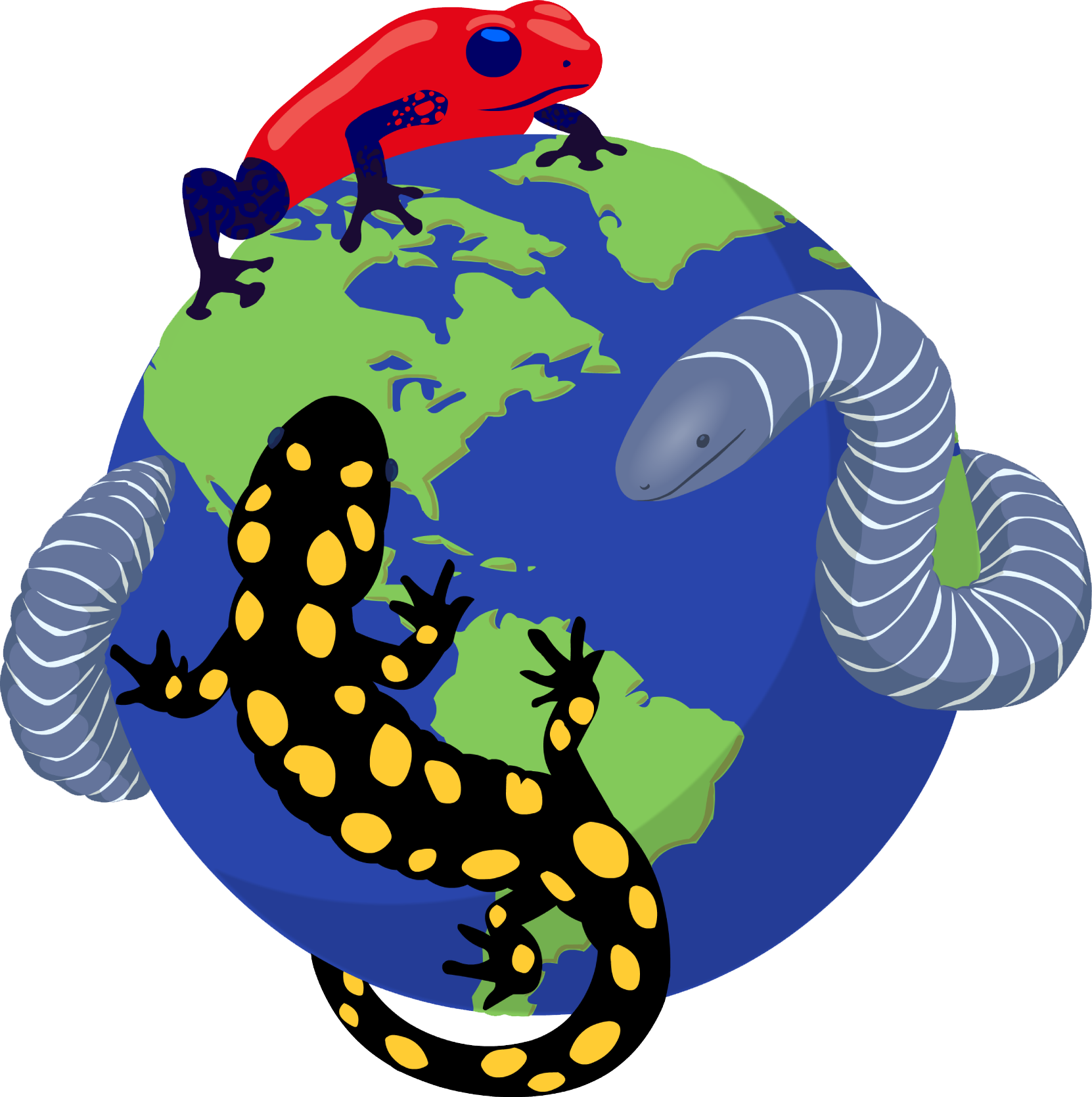|
Melanophryniscus langonei Maneyro, Naya & Baldo, 2008
Redbelly toad | family: Bufonidae genus: Melanophryniscus |
| Species Description: Maneyro, R., D. E. Naya & D. Baldo. 2008. A new species of Melanophryniscus Gallardo, 1961 (Anura: Bufonidae) from Uruguay. Iheringia, 98: 189-192 | |
|
Etymology: The genus name refers to the coloration shared by individuals in the clade, “melano” referring to “black” and “phyros” to “toad” (Maneyro et al. 2008). The species name, “langonei,” is a reference to Dr. José Antonio Langone, a prominent Uruguayan herpetologist (Maneyro et al. 2008). |
|
|
|
|
Description Melanophryniscus langonei in general can be differentiated by its dorsal coloration and glandular wart placement from the M. moreirae and M. stelzneri group species, which include: M. stelzneri, M. montevidensis, M. atroluteus, M. dorsalis, M. fulvoguttatus, M. rubriventris, M. cupreuscapularis, M. klappenbachi and M. krauczuki. Another group species that M. langongei can be discriminated from is the M. tumifrons group, which contains M. tumifrons, M. pachyrhynus, M. devincenzii, M. macrogranulosus, M. cambaraensis, M. orejasmirandai, M. simplex and M. spectabilis. In comparison with this group, M. langonei is generally smaller and lacks snout swelling (Maneyro et al. 2008). Melanophryniscus langonei is morphologically similar to M. sanmartini, but certain features are unique to M. langonei. Melanophryniscus langonei is characterized by having a lighter brown dorsum that has six darker glandular ridges. This species also has a uniformly black gular region. Melanophryniscus sanmartini lacks ridges and has rounded glandular warts throughout the dorsum that are concentrated more on the cephalic region; this species also has a black gular region, but near the tip, there is saffron coloration (Maneyro et al. 2008). In life, the dorsal coloration of M.langonei, along with the vertebral line and loreal region, upper limb and flank regions are all light brown. The glandular warts along the dorsum have white keratin spines. The glandular ridges, running longitudinally across the dorsum are darker brown. There are also light brown stripes on the upper arm closer to the body. The ventrum is uniformly black, with the exception of the belly and ventral side of the upper arms, which feature spotted orange-red coloration. The palmar surface of the hands are red, while the plantar surfaces of the feet are black, with the exception of red tubercles. In preservative, red coloration becomes a white color (Maneyro et al. 2008). The juvenile specimen had similar external characteristics as the adult females (Maneyro et al. 2008). Distribution and Habitat Country distribution from AmphibiaWeb's database: Uruguay
Life History, Abundance, Activity, and Special Behaviors The species is presumed to be insectivorous (Carreira and Maneyro 2019). Melanophryniscus langonei and M. sanmartini can be found in sympatry in some localities (Maneyro et al. 2008). Larva The oral discs and body length of M. langonei is most similar to the lentic tadpoles of the M. stelzneri group, but their labial tooth row formula, and general body structure, is more in line with phytotelm species. For comparisons with tadpoles from 22 other species, please see Baldo et al. (2014) In preservative, the dorsum is dark brown and the ventrum is dark and opaque. The tail musculature is light brown while the fins are transparent with scattered melanophores (Baldo et al. 2014). Tadpoles live in small ponds (Baldo et al. 2014). Trends and Threats This species is particularly threatened by habitat modification, specifically forestation and the introduction of non-native tree species Eucaliptus and Pinus species. Additionally, M. langonei is expected to be affected by climate change. Their small distribution range magnifies the effect of threats (Maneyro et al. 2008). Possible reasons for amphibian decline General habitat alteration and loss Comments References Maneyro, R., Naya, D. E., and Baldo, D. (2008). A new species of Melanophryniscus (Anura, Bufonidae) from Uruguay. Iheringia. Série Zoologia, 98(2), 189–192. [link] Carreira, S., and Maneyro, R. (Eds.). (n.d.). Libro Rojo de los Anfibios y reptiles del uruguay - la diaria. La Diaria. [link]
Originally submitted by: Fede KG (2024-12-13) Description by: Fede KG (updated 2024-12-13)
Distribution by: Fede KG (updated 2024-12-13)
Life history by: Fede KG (updated 2024-12-13)
Larva by: Fede KG, Ann T. Chang (updated 2024-12-13)
Trends and threats by: Fede KG (updated 2024-12-13)
Comments by: Ann T. Chang (updated 2024-12-13)
Edited by: Ann T. Chang (2024-12-13) Species Account Citation: AmphibiaWeb 2024 Melanophryniscus langonei: Redbelly toad <https://amphibiaweb.org/species/7155> University of California, Berkeley, CA, USA. Accessed Jun 7, 2025.
Feedback or comments about this page.
Citation: AmphibiaWeb. 2025. <https://amphibiaweb.org> University of California, Berkeley, CA, USA. Accessed 7 Jun 2025. AmphibiaWeb's policy on data use. |


 Map of Life
Map of Life